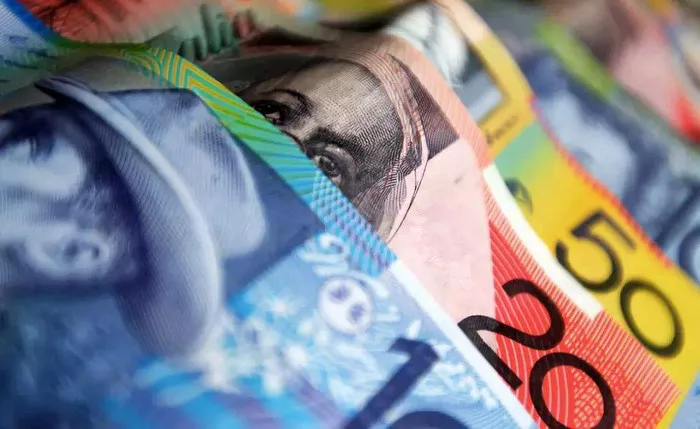The Australian dollar, a key player in the global currency market, has witnessed its fair share of highs and lows over the years. Understanding the historical context and identifying periods of vulnerability is crucial for investors, policymakers, and economists alike. In this article, we delve into the archives to explore when the Australian dollar hit its lowest points and the factors that contributed to these fluctuations.
Historical Perspective:
To comprehend the lowest points of the Australian dollar, we must first cast our gaze back in time. Since its introduction on February 14, 1966, the Australian dollar has experienced various economic climates, shaped by domestic and international influences. The exchange rate of the currency has been susceptible to fluctuations driven by economic indicators, geopolitical events, and global market dynamics.
Low Points and Economic Factors:
One of the notable periods when the Australian dollar reached its lowest levels was during the early 2000s. Around the turn of the century, in the year 2001, the Australian dollar plummeted to approximately $0.4778 against the US dollar. Several factors contributed to this downturn, with a primary driver being the bursting of the dot-com bubble, leading to a global economic slowdown.
The aftermath of the dot-com bubble had far-reaching consequences, impacting economies worldwide. As investor confidence waned and international trade contracted, currencies like the Australian dollar faced depreciation. The Reserve Bank of Australia (RBA) responded by implementing interest rate cuts to stimulate economic growth and restore stability.
Another significant period of depreciation occurred during the global financial crisis (GFC) of 2008. As the crisis unfolded, the Australian dollar experienced a sharp decline, reaching its lowest point in March 2009, trading at approximately $0.6012 against the US dollar. The GFC, triggered by the collapse of major financial institutions and exacerbated by a housing market crash in the United States, sent shockwaves through the global economy.
Australia, heavily reliant on commodity exports, felt the impact of reduced demand from key trading partners, particularly China. The decline in commodity prices, coupled with a contraction in global trade, led to a substantial devaluation of the Australian dollar. In response, the RBA again implemented aggressive monetary policy measures, slashing interest rates to historic lows to stimulate economic activity.
China’s Role:
The relationship between the Australian dollar and the Chinese economy has been a significant factor in periods of depreciation. China’s emergence as a global economic powerhouse and its insatiable demand for commodities, especially during the early 2000s, supported the Australian economy. However, this reliance also exposed the Australian dollar to the ebb and flow of the Chinese economy.
For instance, during the global financial crisis, China implemented a massive stimulus package to counter the economic downturn. This helped stabilize commodity prices and provided a lifeline to the Australian economy, preventing an even more severe depreciation of the Australian dollar.
Conversely, in recent years, tensions between Australia and China, driven by geopolitical and trade disputes, have impacted the Australian dollar. As diplomatic relations strained, China imposed trade restrictions on key Australian exports, such as coal and barley. These disruptions affected Australia’s trade balance and contributed to a decline in the value of the Australian dollar.
Interest Rate Differentials:
Apart from external factors, interest rate differentials between Australia and other major economies play a crucial role in shaping the Australian dollar’s value. Investors seek higher returns, and as such, currencies with higher interest rates often attract more significant capital flows.
During periods when the RBA adopts a dovish monetary policy stance, lowering interest rates to spur economic growth, the Australian dollar tends to weaken. Conversely, when the RBA adopts a hawkish stance, signaling potential interest rate hikes, the currency may appreciate as investors anticipate higher returns.
Recent Trends and Outlook:
In the aftermath of the global financial crisis, the Australian dollar experienced a period of resilience and strength. Supported by robust economic growth, especially in the resource and commodity sectors, the currency reached parity with the US dollar in 2011.
However, in the subsequent years, as global economic dynamics shifted, and commodity prices softened, the Australian dollar retraced some of its gains. The currency has displayed a degree of volatility, influenced by factors such as trade tensions, geopolitical developments, and shifts in global interest rate expectations.
As of the latest available data, the Australian dollar has shown signs of recovery, trading at levels that are higher than its lowest points. The RBA continues to closely monitor economic indicators, employing a balanced approach to monetary policy to support sustainable economic growth while keeping inflation within the target range.
See Also What Is The Latest Price Of Australian Dollar?
Conclusion:
The journey of the Australian dollar through the decades reflects the interconnectedness of global economies and the intricate web of factors influencing currency values. From the dot-com bubble to the global financial crisis and beyond, the Australian dollar has weathered numerous storms, adapting to the evolving landscape.
Understanding when the Australian dollar was at its lowest involves a comprehensive analysis of historical events, economic indicators, and global trends. While the currency has faced challenges, it has also demonstrated resilience and the ability to rebound.
As we navigate the uncertainties of the future, the lessons from the Australian dollar’s historical lows provide valuable insights for policymakers, investors, and observers. The currency’s trajectory remains intertwined with the broader economic landscape, ensuring that its journey will continue to be shaped by a complex interplay of domestic and international forces.


